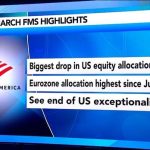Introduction
Investing in the stock market can be daunting, especially when deciding which companies to invest in. In this article, we take a deep dive into three of the most popular stocks—Apple, Microsoft, and Tesla—using a value investing framework refined over a decade of market-beating performance. We also reveal a secret bonus stock that offers superior returns. By the end of this analysis, you’ll have a clear understanding of which stock is the best investment today, crowned as the “King of the Hill.”
Framework for Evaluating Stocks
To evaluate these stocks, we use a three-part framework that focuses on growth, distributable cash flows, and multiple change. These components collectively determine the expected returns for shareholders. Here’s a detailed breakdown of the framework:
1. Growth
Growth is the foundation of any investment. We examine:
- Historical Growth: The company’s past performance to extrapolate future growth.
- Management Guidance: Forecasts and insights provided by the company’s leadership.
- Industry Trends: The growth trajectory of the industry and any megatrends that could influence the company’s performance.
Key Insight: It’s easier for a company to grow in a rapidly expanding industry than in one facing structural decline.
2. Distributable Cash Flows
Distributable cash flows represent the surplus cash a company generates that can be returned to shareholders via dividends or share repurchases. We assess:
- Cash Efficiency: How efficiently the company generates and manages cash.
- Reinvestment Needs: Whether the company needs to reinvest heavily to maintain operations.
Key Insight: Companies with high distributable cash flows are more attractive to value investors.
3. Multiple Change
Multiple change refers to the company’s valuation multiples (e.g., EV/EBIT, P/E) relative to historical averages and industry peers. We evaluate:
- Current Valuation: How the company is priced today compared to its historical averages.
- Future Profit Margins: Whether the company’s margins are expected to improve or decline.
Key Insight: A company trading at a high multiple may face contraction, while one trading below historical averages may offer upside potential.
Risk Profile
Finally, we assess the risk profile of each stock to ensure an apples-to-apples comparison. This involves:
- Probability of Underperformance: The likelihood of the company underperforming the projected returns.
- Margin of Safety: Ensuring the investment has a high probability of surpassing a 10% average return, which is the historical market return.
Analysis of Apple
Growth
Apple, the most valuable company in the world, has achieved a 10-year compound annual growth rate (CAGR) of 8.5%. However, its massive size makes further acceleration unlikely. Analysts project a 6% annual growth rate for the next two years, driven by iPhone sales (which account for half of Apple’s revenue) and growth in services like Apple Music and iCloud.
The global smartphone industry is expected to grow at 4% annually until 2030, and Apple’s market share has remained stable at 20%. To achieve growth above the industry average, Apple will need to rely on new product categories like AR goggles and AI-driven innovations.
Distributable Cash Flows
Apple has consistently returned cash to shareholders, with 5% annual returns via share repurchases and dividends. The company has slightly increased its net debt while maintaining a small dividend, resulting in a net distributable cash flow of 5% annually.
Multiple Change
Apple’s current valuation is high, with an EV/EBIT of 24 and a P/E of 30. This is significantly above its 5-year averages (EV/EBIT 20.5, P/E 26) and 10-year averages (EV/EBIT 15, P/E 20.5). The high valuation is driven by expectations around AI and AR goggles, but with growth projected to be lower than historical averages, we expect a 7% annual multiple contraction over the next three years.
Risk Profile
Apple’s risk profile is low, thanks to its strong brand, loyal customer base, and resilient ecosystem. While a recession could temporarily impact sales, Apple is well-positioned to recover quickly.
Expected Return
Combining the growth, cash flows, and multiple change, Apple’s expected annual return is 4% over the next three years.
Conclusion
Apple is a fantastic company, but its current valuation is too high to justify significant investment. Warren Buffett, a major Apple investor, bought the stock at much lower multiples (P/E 15-16) and is unlikely to buy at current levels.
Analysis of Microsoft
Growth
Microsoft has achieved a 10-year CAGR of 10.5%, with recent acceleration driven by its cloud services (Azure) and AI initiatives. Analysts project 13% annual growth for the next three years, fueled by the growing demand for cloud computing and AI-driven productivity tools.
Microsoft’s cloud services account for one-third of its revenue, and the company has been gaining market share in this rapidly growing industry. The global cloud services market is expected to grow at 15% annually until 2030, providing a strong tailwind for Microsoft.
Distributable Cash Flows
Microsoft has returned 2.5% annually to shareholders via share repurchases and dividends. The company has also slightly reduced its net debt, resulting in a net distributable cash flow of 2.5% annually.
Multiple Change
Microsoft’s current valuation is slightly above historical averages, with an EV/EBIT of 26.5 and a P/E of 33. Given the company’s strong growth prospects and peak profit margins (42%), we expect a modest 2.5% annual multiple contraction over the next three years.
Risk Profile
Microsoft’s risk profile is low to moderate. The company’s recurring revenue streams and resilience to economic cycles make it a safer investment compared to Apple and Tesla.
Expected Return
Combining the growth, cash flows, and multiple change, Microsoft’s expected annual return is 12% over the next three years.
Conclusion
Microsoft offers a higher expected return than Apple with a slightly higher risk profile. It is crowned the King of the Hill among the three stocks analyzed.
Analysis of Tesla
Growth
Tesla’s historical growth is unsustainable, so we focus on analyst projections. Analysts expect Tesla to grow at 25% annually for the next three years, driven by the expanding electric vehicle (EV) market. Tesla currently holds a 20% market share in the EV industry, which is expected to grow at 25% annually until 2030.
Distributable Cash Flows
Tesla’s rapid growth requires significant reinvestment, leading to 4.5% annual shareholder dilution. The company has no dividends and has reduced its net debt by 8.5 billion dollars, resulting in a net distributable cash flow of -4% annually.
Multiple Change
Tesla’s current valuation is stratospheric, with an EV/EBIT of 61 and a P/E of 70. This is far above traditional automakers (EV/EBIT 9-15) and reflects high growth expectations. As growth slows, we expect a 8% annual multiple contraction over the next three years.
Risk Profile
Tesla’s risk profile is high. The company faces risks from competition, market share loss, regulatory changes, and the uncertain future of self-driving technology.
Expected Return
Combining the growth, cash flows, and multiple change, Tesla’s expected annual return is 13% over the next three years.
Conclusion
Tesla’s high risk profile and lack of margin of safety make it a less attractive investment compared to Microsoft, despite the slightly higher expected return.
Secret Bonus: Betson (Swedish Online Gambling Company)
Growth
Betson, a Swedish online gambling company, has achieved a 10-year CAGR of 10%. Analysts project 9-10% annual growth for the next three years, driven by the expanding online gambling industry, which is expected to grow at 12% annually until 2030.
Distributable Cash Flows
Betson generates significant cash flows, returning 7% annually to shareholders via dividends and bolt-on acquisitions. The company’s cash efficiency allows it to maintain growth without heavy reinvestment.
Multiple Change
Betson’s current valuation is low, with an EV/EBIT of 7 and a P/E of 8.5. This is below historical averages (EV/EBIT 8.5, P/E 9.5) and reflects the company’s undervaluation. We expect a 6% annual multiple expansion over the next three years.
Risk Profile
Betson’s risk profile is low. The company’s diversified operations and long track record mitigate risks associated with regulatory changes and market volatility.
Expected Return
Combining the growth, cash flows, and multiple expansion, Betson’s expected annual return is 22% over the next three years.
Conclusion
Betson offers a higher expected return with a lower risk profile, making it the top pick for value investors.
Final Thoughts
Microsoft emerges as the King of the Hill among Apple, Microsoft, and Tesla, with a 12% expected return. However, the secret bonus stock, Betson, offers a 22% expected return with a lower risk profile, making it the preferred investment.
Key Takeaways
- Valuation Matters: Even great companies can be poor investments if purchased at high valuations.
- Risk Assessment: Understanding risks associated with growth, cash flows, and multiples is crucial.
- Diversification: Consider lesser-known companies in niche industries for potentially higher returns.
- Long-Term Perspective: Focus on companies with sustainable growth, strong cash flows, and reasonable valuations.


